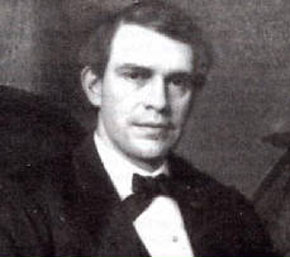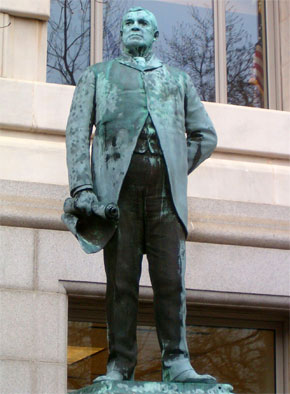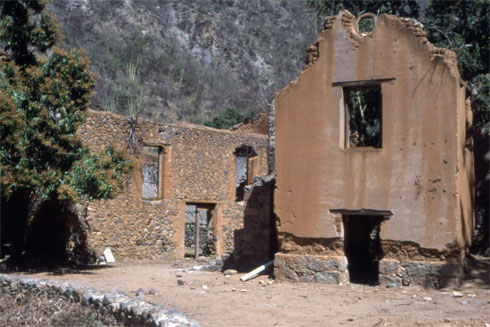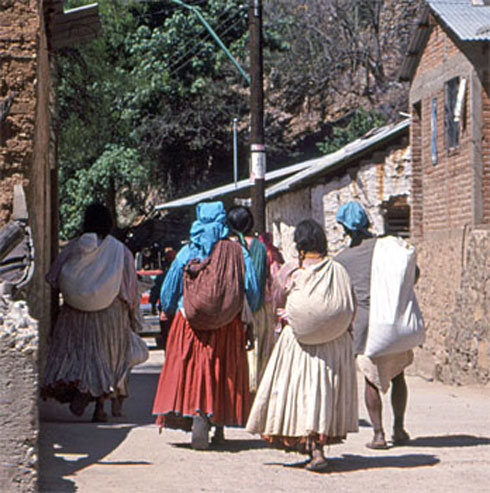
At the bottom of the deepest canyon in the vast complex of mountains and canyons known collectively as Copper Canyon is the sleepy little village of Batopilas. Sitting next to the bougainvilleas in the town square you might see a cowboy riding his horse down the sunbaked-earth main street, or a group of brightly clad Indians packing their burros for the long journey back to their remote village. It is hard to believe that this quiet village was once one of the richest silver mining cities in the world.
The Spaniards first mined ore here in 1632. Over the centuries more than three hundred mines were worked, but it took a most unusual American to bring real wealth to the area. The man was Alexander Shepherd and the story starts, not in this remote section of Mexico’s Sierra Madre mountains, but in Washington D.C.

In 1871, Alexander Robey “Boss” Shepherd headed the D.C. Board of Public works and two years later became territorial governor of the District of Columbia. At that time Washington was a city with muddy streets and unpaved sidewalks. During his three years in office Shepherd constructed 157 miles of roads, 123 miles of sewers, 39 miles of gas mains and 30 miles of water mains, leading some historians to refer to him as the “Father of Modern Washington.” Instead of being heralded as a hero, however, he was ungraciously chased out of office after Congress discovered that he had overspent the cities budget by $16 million with a disproportionate share of the benefits going to neighborhoods in which he had financial interests.
Shepherd declared bankruptcy and, in 1880, moved his family to Batopilas, where he had purchased a silver mine from another American, John Robinson, for $600,000. Thirteen years earlier, Robinson bought two old supposedly worked out mines where he discovered a rich vein of ore, but then ran into a major obstacle—because of the remoteness of the area his transportation and processing costs were far too high to make the operation profitable.
Shepherd, who always thought on a grand scale, applied the same organizing skills he had used in Washington to his new mining venture.
He began by filing more than 300 additional mining claims and consolidating his holdings into the Batopilas Mining Company. Then, instead of shipping out raw ore to be processed at some distant location, he constructed a complete processing facility in Batopilas. The processed silver was cast into bars, loaded two bars per mule, and taken by monthly mule trains of up to 100 mules to Chihuahua.
Between 1880 and 1906, 20 million ounces of silver were extracted from the mines—ranking the Batopilas mines among the richest silver mines in the world. At their peak the mines employed 1500 workers, and the total length of tunnels exceeded 70 miles.

Shepherd’s innovations included the construction of the Porfirio Diaz tunnel—a tunnel bored through the base of a mountain, where a train hauled out ore, which was dropped down shafts from the tunnels above. The train had to be dismantled and hauled in almost 200 miles by burro and human labor. The tunnel is still there, now deserted except by bats.
Shepherd did much to improve the town of Batopilas, building bridges, aqueducts, and a hydroelectric plant, which made Batopilas the second city in Mexico to have electricity—second only to Mexico City itself. By the time Shepherd died in 1902, the town’s population had grown from 400 to around 5000 (it is now around 1000). The hydroelectric facility he built was restored in 1988 and once again powers the town, and his original aqueduct still provides the local water supply.
Today there is no large-scale mining in Batopilas, though a few old prospectors still pan gold and silver from the river or extract small quantities of ore from the abandoned workings.

